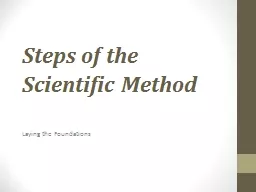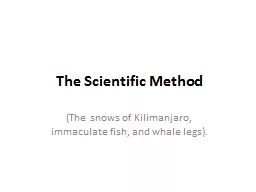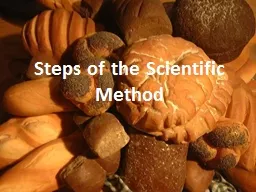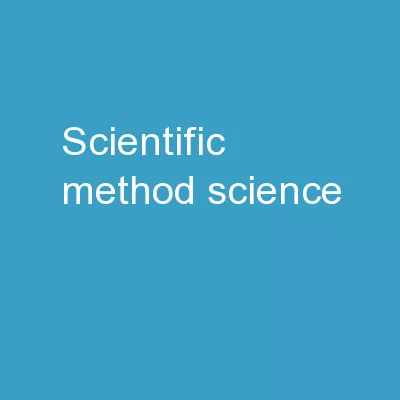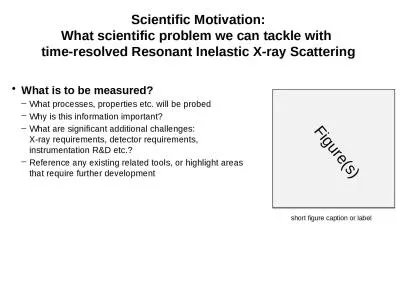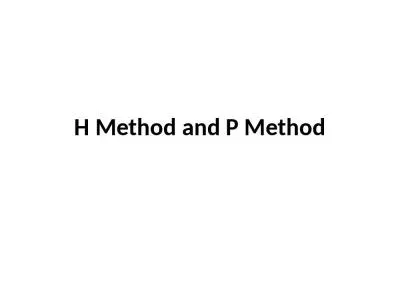PPT-Steps of the Scientific Method
Author : festivehippo | Published Date : 2020-06-23
Laying the Foundations 1 State the problem What is the problem This is typically stated in a question format EXAMPLE Will taking one aspirin per day for 60 days
Presentation Embed Code
Download Presentation
Download Presentation The PPT/PDF document "Steps of the Scientific Method" is the property of its rightful owner. Permission is granted to download and print the materials on this website for personal, non-commercial use only, and to display it on your personal computer provided you do not modify the materials and that you retain all copyright notices contained in the materials. By downloading content from our website, you accept the terms of this agreement.
Steps of the Scientific Method: Transcript
Download Rules Of Document
"Steps of the Scientific Method"The content belongs to its owner. You may download and print it for personal use, without modification, and keep all copyright notices. By downloading, you agree to these terms.
Related Documents

